by Aoife Donnellan, studio photos by Trevor Good // Apr. 6, 2021
Peles Empire’s work thrives off of the dialogue between place, historical interpretation and materiality. The pair—Barbara Wolff and Katharina Stöver—are an artist group who occupy a bright studio in Neukölln, split into a workspace and an exhibition space. Dotted around the floor and across tables are A3 prints, styrofoam, cardboard, ceramics, bubble wrap, rope and various other sculptural materials. Behind the curtain that separates exhibition space from workspace you can find a mass of material, tools and works-in-progress. The variety evident in their workspace is indicative of their appreciation for materials. Their practice combines image, sculpture and painting to create an amalgam of work that examines the differences and the similarities between three-dimensional objects and two-dimensional representations.
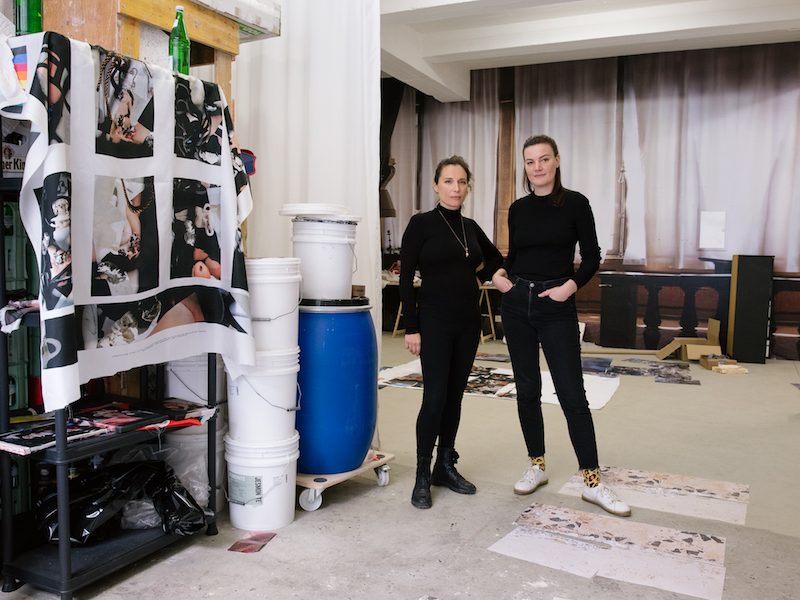
While they don’t frequently collaborate with other artists, they do invite people to exhibit in their space. The walls of the exhibition space depict an image of the breakfast room from the location of their namesake, Peleș Castle in Romania. This static wallpaper is the omnipresent backdrop of the duo’s artistic process as well as other artists’ exhibitions. They view this as an extended collaboration with those invited to exhibit, as the imagery on the walls remains a constant, which artists can choose to respond to, or ignore. The aim being to copy “one room onto another,” which is pushed even further when they create work laden with references. The inclusion of symbols and images from Peleș Castle guides their practice and accompanies their ritualistic approach to representation. The pair’s starting point when they exhibit elsewhere is to seek out the historic, architectural, or mythological elements that they can blend with elements from the castle. The intention behind Peles Empire’s work is often to ask: “How much can you copy an original until it becomes a new entity? When is there nothing left? When is there no more echo from the original?”.
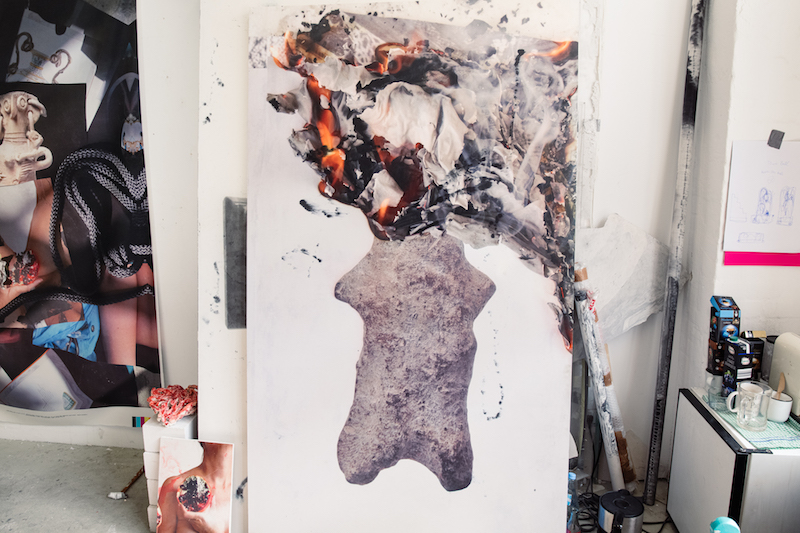
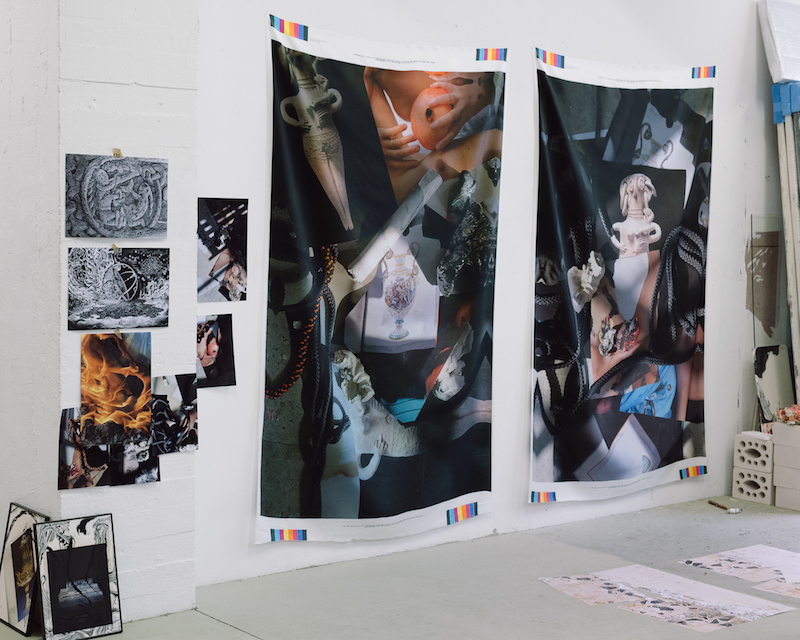
The story of where they got their name is tied to their first project. “We started in two physical locations. We lived together in Frankfurt, where we also studied at the Städelschule,” they explain. “We didn’t know each other so well, but we started having conversations about work and we were both very interested in similar things. We both came from painting, originally. We lived in a flat-share and one of the flatmates moved out, so we started talking about what to do with this empty room.” They wanted to commemorate the fact that they lived in the red light district of Frankfurt, so they decided to open the doors of their home every Thursday night for a kind of salon, which was later used as an exhibition space. Threading the line of public and private, they created a bar setting, and to capture the vibrancy of their neighbourhood, chose to cover the walls of the salon in images of the prince’s bedroom from Peleș Castle. This collaboration between physical and represented space remains a core facet of their practice today.
The duo’s love for the neo-Renaissance castle came as a result of the location’s approach to aesthetics and time. “There is an art deco room next to a rococo room,” they tell me. “It sort of picks and chooses. Everything is represented in a non-hierarchical manner. They even have energy saving light bulbs. Murano glass is next to a fake Medici tomb.” Their work developed naturally from this idea of inclusion of differently valued materials and references, and the impression that occurs when this range of variety, both physical and immaterial, is represented together. What originated as a salon quickly became a philosophy. Regardless of material or origin, Peles Empire’s practice connects moments and materials together to capture process, ritual and history.
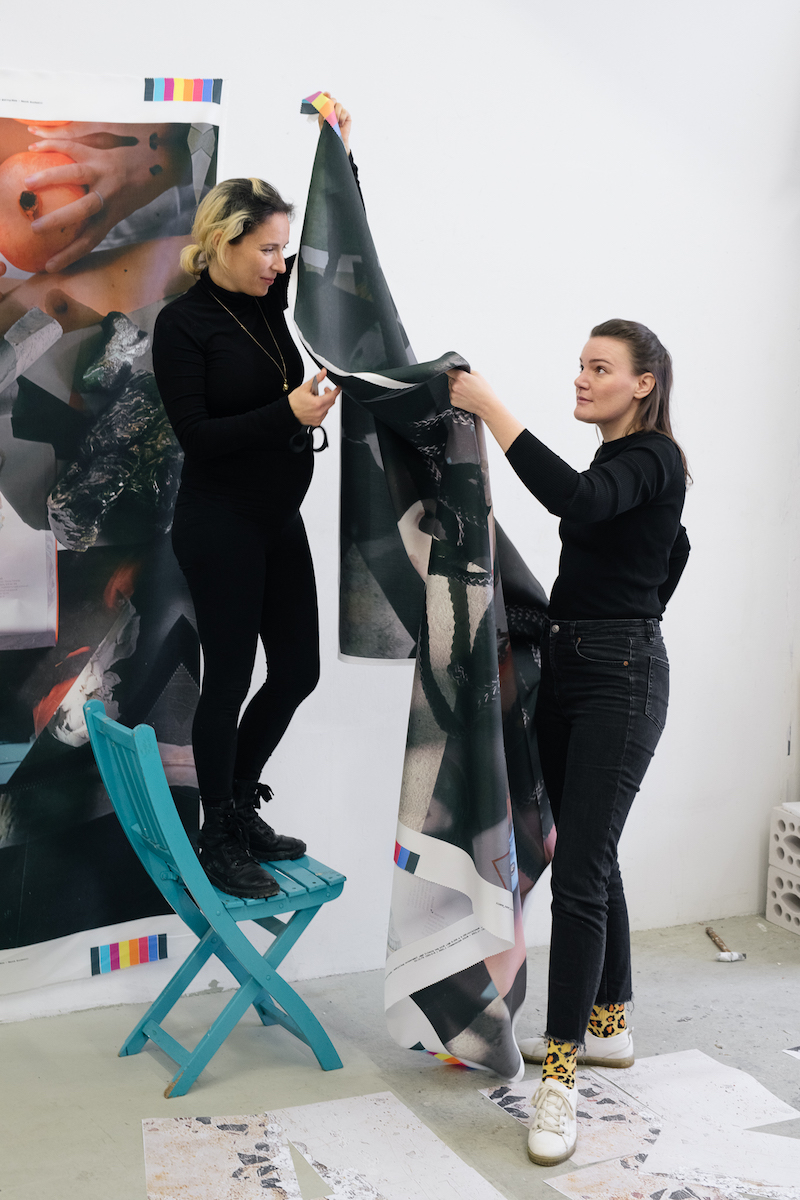
Peles Empire’s approach to creating work emphasises the process; they aim to make their process visible in all of their work. The floor of the studio is covered in high-quality A3 prints, which they use to visualise works. They’re currently working on ‘the long sleep of amber,’ their exhibition of sculptural works exhibited in the former turbine hall, as well as a series of printed flags, which will appear as part of E-WERK’s Flag Commission. E-WERK Luckenwalde was originally a coal power station and has only recently been reanimated into artist studios and an exhibition space. For their exhibition at E-WERK, they are engaging with the history of the space. They created a pit-fire in Luckenwalde, using the wood chips normally used at the power station to create electricity, to capture the elemental quality of the location’s original purpose. “Thinking about where electricity comes from, how people started imagining how fire can happen, it’s a very primal or human desire to make fire or energy…controlling light and fire.” They created collages out of images taken of the material as it burned, which consisted of documents, images of gods, fantastical historical depictions of how electricity works and Frankenstein, among other things. This crossover from science and technology to the ritualistic practice of burning symbols perfectly captures their interest in combining historical moments with contemporary understanding. The images captured will ultimately be created into a flag, which will embody the process of creating fire and ash. “The process of the firing is what we are showing as the flags,” they tell me. “It is as much about the ritual as it is about what happened before or what comes afterwards.”
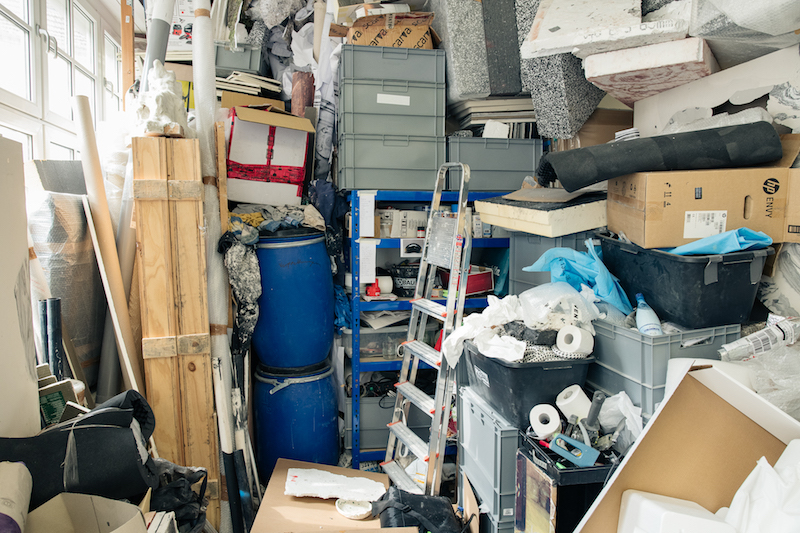
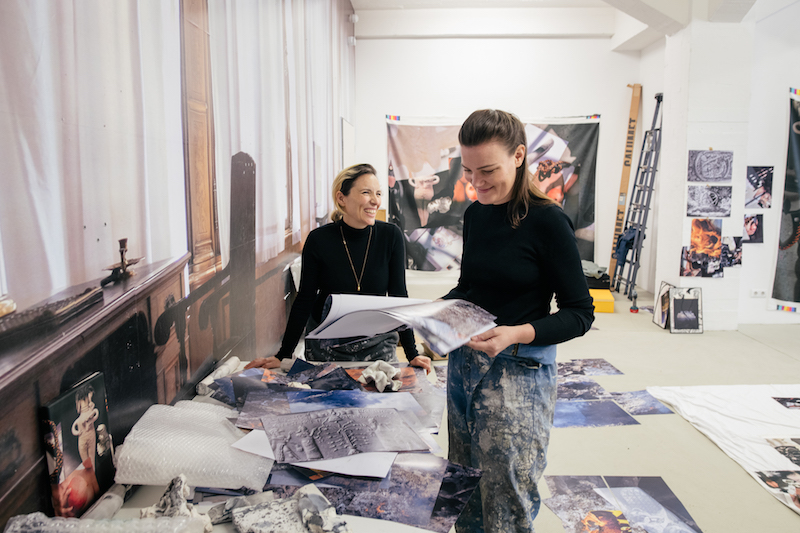
The only contemporary waste product of electricity is ash, which they decided to incorporate into their sculptural panels. These works—falling somewhere between image and sculpture—combine materials from the exhibition location, studio materials and printed images of the firepit. This amalgamation of creation, process and waste to create a final product, encapsulates Peles Empire’s intentions as artists. Their interrogation of ritual and metamorphosis results in work that captures the dynamic experience of process.
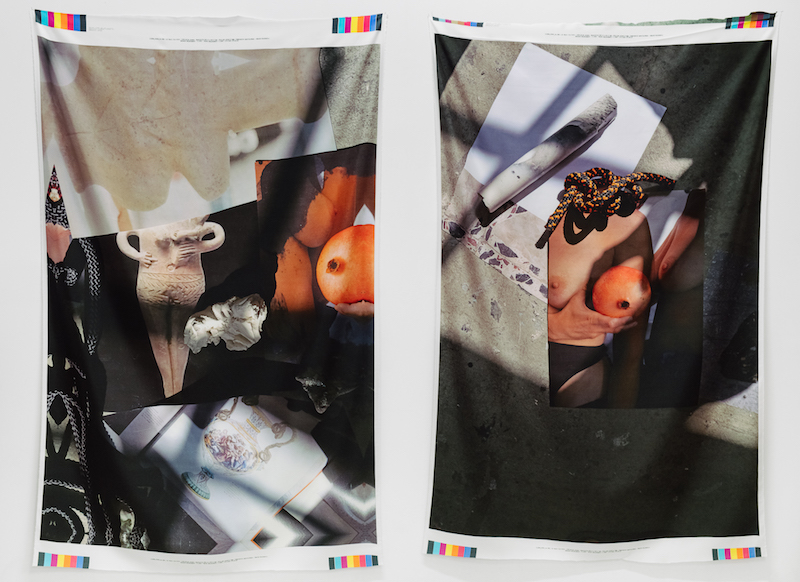
Also present in the studio is their work for an upcoming residency at Eins Gallery in Cyprus, which looks at historical representations of Aphrodite. Their aim is to question current misconceptions of the goddess, by reintroducing her original status as the goddess of all sexual orientations. This work is trying to restore the mythological link to Aphrodite by examining history’s ability to shape concepts to suit sensibilities. They ask: “How has society, or our thoughts, or time, changed the perception of something that was? And how do we see that now? Is how we see it now the same way that we used to? And everything in between, is what we find interesting.”
Peles Empire’s studio space seems to embody the intentions of their practice. Their work links moments in time, creating a collage of identities for spaces, concepts and objects. The pair’s combination of materials from process to final product results in an interrogation of representation, examining the different manifestations of objects and concepts throughout history. Their new work ‘the long sleep of amber’ will be exhibited at E-WERK Luckenwalde, with the opening currently set for May 1st, 2021.
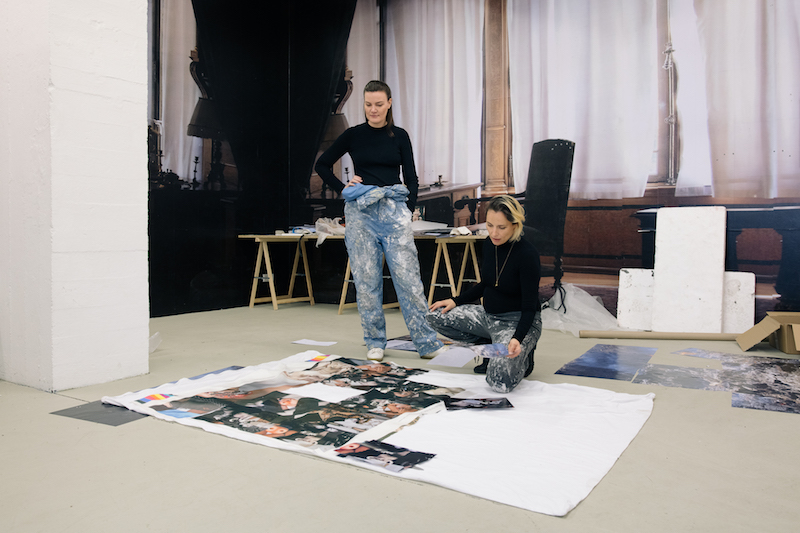
This article is part of our feature topic of ‘Ritual.’ To read more from this topic, click here.
Artist Info
Exhibition Info
E-WERK Luckenwalde
Peles Empire: ‘the long sleep of amber’
Exhibition: May 1, 2021 (subject to government guidelines, see link below for latest details)
kunststrom.com
Rudolf-Breitscheid-Straße 73, 14943 Luckenwalde, click here for map




















